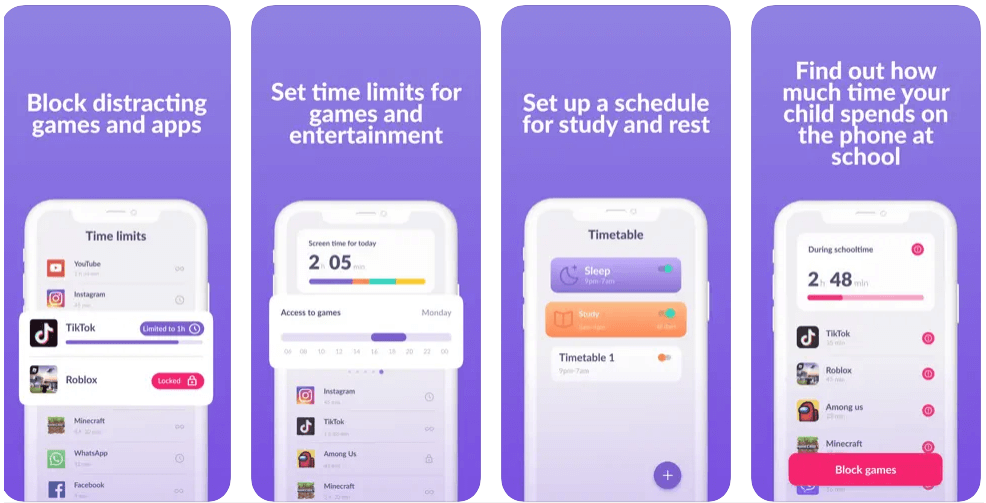What is Sadfishing? Recognizing the Signs and Nurturing Emotional Well-being

It’s not uncommon for young people to turn to social media for emotional support. Whether they’re dealing with friendship drama, academic pressure, or relationship troubles, these platforms can provide a space for them to vent and seek comfort.
However, there’s a new trend that parents should be aware of called “sadfishing,” and it’s causing concern among mental health experts.
In this blog post, we’ll explore what sadfishing is, why it’s a cause for concern, how to recognize it, and what parents can do to support their children.
Contents:
- What is Sadfishing?
- Is it Sadfishing or a Cry for Help?
- Signs of Sadfishing
- Safishing and its Mental Health Implications
- How to Deal With Sadfishing?
- FAQ
What is Sadfishing?

fizkes/Shutterstock.com
Before we understand what causes sadfishing online —and why it’s so damaging to a child’s mental health—let’s take a look at the definition of what this trend actually is.
Not to be confused with catfishing, sadfishing, sometimes referred to as “sad fishing,” is a term coined to describe exaggerating one’s emotional distress online to garner attention and sympathy from others. It’s a trend that has become increasingly common amongst young people, especially on social media platforms like Instagram and Twitter.
While it’s normal for young people to seek validation and support from their peers online, sadfishing can become problematic when it becomes the primary way they manage their emotions.
This trend can also lead to further feelings of isolation and disconnection as the young person may feel like they need to constantly seek attention and validation instead of developing healthy coping mechanisms. Social media can also perpetuate the feeling that others are happier and more successful, creating a cycle of negative emotions.
One of the most common traits of sadfishing is the excessive or dramatic use of phrases like “I’m so depressed” or “I can’t take it anymore” without providing any real context or explanation. It’s important to be mindful of these kinds of posts and be supportive without reinforcing the idea that only negative emotions are worthy of attention.
Is it Sadfishing or a Cry for Help?

Ground Picture/Shuttertock
Sadfishing is a phenomenon that is different from genuine concern or a cry for help. Most teenagers who engage in sadfishing often want to vent their frustrations or feel validated, but they don’t necessarily want help. They may post about their issues but ignore anyone who offers help.
On the flip side, a cry for help is a genuine call for professional assistance. It may manifest or start in numerous ways, including talking about self-harm, suicide, or making a clear request for help.
The difference between sadfishing and genuine cases of distress can be blurry, making it essential to approach your child with compassion and patience.
Signs of Sadfishing
While sadfishing may seem harmless, it can have some serious consequences and may indicate a deeper underlying issue.
Here are some of the most common signs of sadfishing.
Frequent Posts About Emotions
Sadfishing typically involves frequent posts about one’s emotions or struggles. It’s not uncommon to see posts with captions such as “I can’t keep going anymore,” or “Life is too hard.” You may see your child post a meme on social media that indicates they’re hurt in some ways, too.
Sadfishers tend to post about their emotions repeatedly to elicit sympathy from their followers or friends. If you notice your child posting a lot about their emotions or struggles, it may be worth checking in with them to see if they need help.
Over-The-Top Reactions

Iren_Geo/Shutterstock.com
Sadfishers often have over-the-top reactions to seemingly minor problems or events. They may post about a small argument with a friend or a minor inconvenience, making it appear worse than it really is.
This type of behavior is typically done for attention and sympathy from their followers. Seeing your child having dramatic reactions to small problems may be a sign of sadfishing.
No Follow-Up
One of the key differences between sadfishing and a cry for help is the follow-up. Sadfishers tend to post about their problems and then move on to the next thing. They may not respond to comments or messages from concerned friends or family members. This behavior is a sign that the person isn’t genuinely seeking help but rather attention.
Posting for Likes
In today’s social media-driven world, likes and followers have become an obsession for many users. Sadfishing is often done to gain more likes, comments, or shares on a post. The more dramatic or exaggerated the post, the more attention it’s likely to garner. If you notice your child posting only for likes or followers, it may be a sign of sadfishing.
Changes in Behavior
Finally, changes in behavior may be a sign of sadfishing or a cry for help. If you notice your child becomes more withdrawn, isolates themselves, or has a sudden change in mood or behavior, it’s worth checking in with them.
While it may be a sign of sadfishing, it could also have another meaning. It’s also possible that something more serious is going on, and your child needs help.
Safishing and its Mental Health Implications

javi_indy/Shutterstock.com
Sadfishing can potentially have several implications for teens’ mental health. There are a few reasons why. It can become an attention-seeking behavior, where teenagers feel the need to get validation from social media for their sadness. It can also be an attempt to hide or mask their underlying problems or feelings, and social media is seen as a safe outlet to do just that.
Finally, it can lead to comparison anxiety because teens often measure their problems against the more significant issues others share online, leading to them feeling as though their struggles are not valid or enough reason to seek help.
The Risks of Sadfishing
A major concern with sadfishing is the impact it can have on your child’s mental health. Youngsters who resort to this trend may be struggling with low self-esteem or depression and might not be getting the support they need. Sadfishing could also expose them to online trolls and bullies who use it to target vulnerable people.
It could also affect your child’s digital footprint. Even if the posts are removed, they could potentially be screenshot and shared elsewhere, making it nearly impossible to control.
The impression a potential employer or college admissions officer might have can also be impacted if they are to come across a child’s sadfishing attempts. This kind of content showcases the child’s emotional state in a way that might lend itself to a less favorable opinion or could even be a red flag.
How to Deal With Sadfishing?
Before you can tackle sadfishing, it is important to understand why someone may engage in this behavior. Many individuals who sadfish are seeking emotional validation and support from their social media followers.
While it may be frustrating for parents to see their children sharing private struggles online, it is essential to recognize that they may feel isolated and alone without additional emotional support from others.
Things Parents Can Do About Teen Sadfishing

Kids360 app
- As a parent, it’s important to stay informed about what your child is sharing on social media platforms like Instagram, Reddit (related: Is Reddit safe for kids?), and Twitter. Make sure that your child is not posting anything inappropriate or hurtful to others. You can also check out apps like Kids360, which can monitor your child’s device usage.
- Have a conversation with your child about sadfishing and explain why it’s not a healthy way to cope with emotions. Encourage them to share their feelings with you or some other trusted adults instead of turning to social media.
- If your child is struggling emotionally, it’s essential to teach them how to seek professional help. Let them know that therapy with a psychologist is a powerful tool to work through their feelings and that it’s okay not to be okay. You can also look for local resources that provide counseling services specifically for teens.
- It’s important to let your child know that their feelings are valid and that you are there to support them. Reassure them that it’s okay to feel sad or anxious and that you will be there to help them through it. By doing so, you can help your child build resilience and emotional intelligence, which will serve them well in the future.
- Finally, do your best to be a good role model when it comes to social media usage. Monitor your own online behavior and avoid oversharing personal information or posting negative comments. By doing so, you can teach your child how to engage with social media in a healthy and productive way.
Keep an eye on your child’s online activity with the Kids360 app and engage in conversations about responsible social media use. Encourage them to critically evaluate the authenticity of online interactions and recognize the difference between seeking genuine support and seeking validation through sadfishing.
As a parent, it can be difficult to navigate the online world your teenagers are inhabiting.
Sadfishing is a toxic trend that can have negative implications for your child’s mental health. By staying informed and ensuring your child has a healthy relationship with social media and the people they interact with through it, you can help protect and promote their mental well-being.
Remember, your child’s emotional welfare should always be your top priority—and Kids360 can help.
FAQ

Ground Picture/Shuttertock
What is an example of sadfishing?
Examples of sadfishing are when someone posts a long, detailed story about their struggles with a mental health condition, but instead of seeking professional help, they expect virtual support and validation.
What are the main signs of sadfishing?
Someone who is sadfishing may frequently post about their problems online, including detailed stories about their struggles, without actively seeking help. They may also become defensive or argumentative when someone challenges their narrative or suggests they seek help.
What is the psychology behind sadfishing?
Sadfishing is a combination of seeking attention and validation from others, a desire to feel in control of one’s narrative, and an attempt to cope with internal pain. Often, those who engage in sadfishing have unresolved emotional issues that they use social media to distract themselves from.
What is the danger of sadfishing?
Posting something negative can elicit instant attention and validation in the form of comments, likes, or direct messages. This behavior can become addictive and lead to the growth of negative self-talk and validation-seeking, ultimately harming one’s mental health.
What are emotional traps examples?
Emotional traps are different tactics that are used to manipulate friends, family, and followers on social media. Sadfishing is one such example, but there are others like gaslighting, guilt-tripping, and silent treatment.
The picture on the front page: Chekyravaa/Shutterstock.com
Проверьте электронный ящик



















